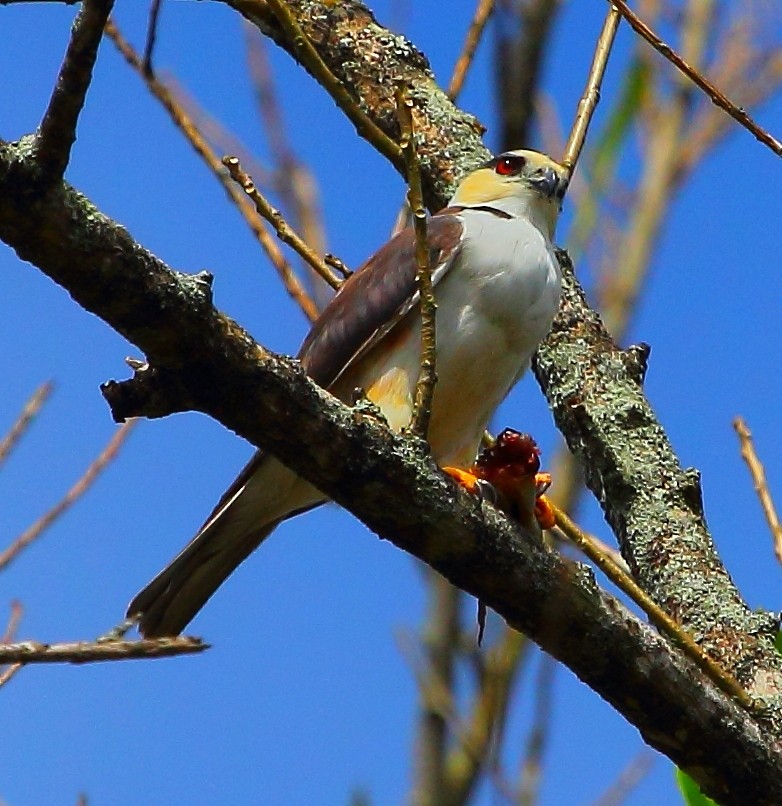Pearl Kite
A species of Pearl Kite Scientific name : Gampsonyx swainsonii Genus : Pearl Kite
Pearl Kite, A species of Pearl Kite
Botanical name: Gampsonyx swainsonii
Genus: Pearl Kite
Content
Description General Info
Description
The pearl kite is 20.3–23 cm (8.0–9.1 in) in length and weighs 80–95 g (2.8–3.4 oz). It is the smallest raptor in the Americas and one of the two smallest accipitrids in the world (besides the little sparrowhawk). The tiny hawk, another neotropical species, attains a slightly higher weight than the pearl kite. The adult has a black crown, upperparts, wing and tail, a rufous edged white collar, yellow forehead and cheeks, mainly white underparts, and yellow legs. Immature birds are similar to the adults but have white and chestnut tips to the back and wing feathers, a buff collar and some buff on the white underparts. In flight this species looks mainly black above and white below. The northern form G. s. leonae differs from the nominate G. s. swainsonii in that it has rufous flanks. 
Size
28 cm
Nest Placement
Shrub
Feeding Habits
Pearl Kite primarily preys on lizards, small birds, and insects, utilizing swift hunting techniques. This raptor exhibits unique preferences for live prey, often seen actively foraging during the day.
Habitat
Pearl Kite is typically found in dry to semi-arid habitats, including shrubby pastures, savannas, cerrados, and open tropical woodlands. These birds inhabit areas with sparse woods and even adapt to partially logged regions and urban parklands. Pearl Kite thrives up to elevations of 1000 meters, frequently nesting in gallery forests as well. The species is generally associated with lowland open areas across broad geographical regions of tropical habitats.
Dite type
Insectivorous
General Info
Feeding Habits
Bird food type
Distribution Area
This tiny kite breeds from Panama, Colombia and Venezuela south to Bolivia and northern Argentina, with an isolated sedentary population in Nicaragua. It is expanding its range and was proved to breed on Trinidad in 1970. It was first reported in Costa Rica in the mid-1990s, and now is fairly common along Pacific slope, to 1000m. 
Species Status
Not globally threatened.
